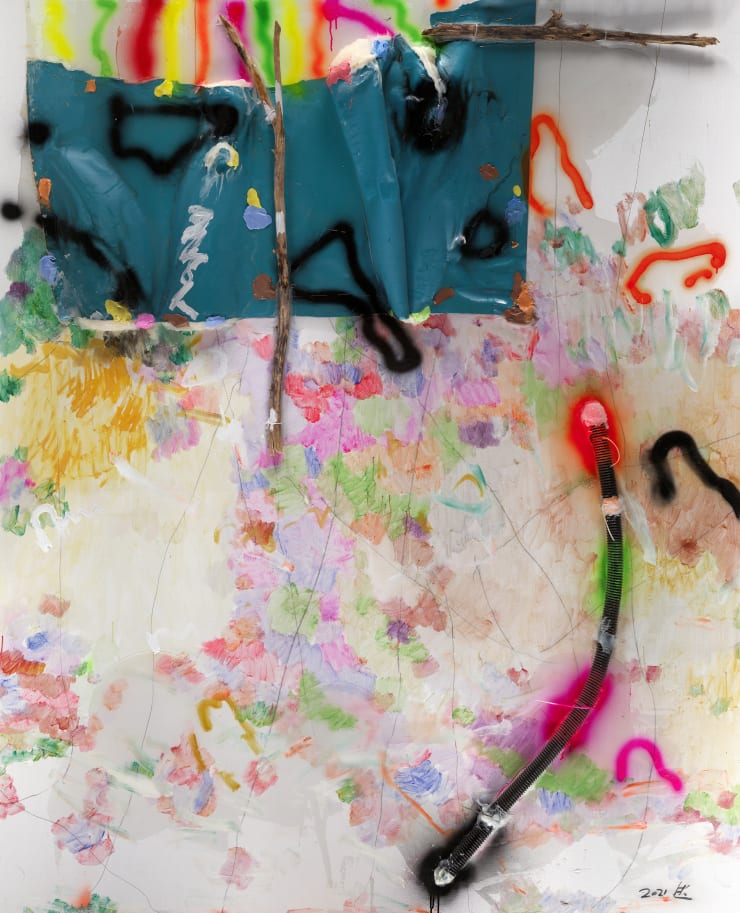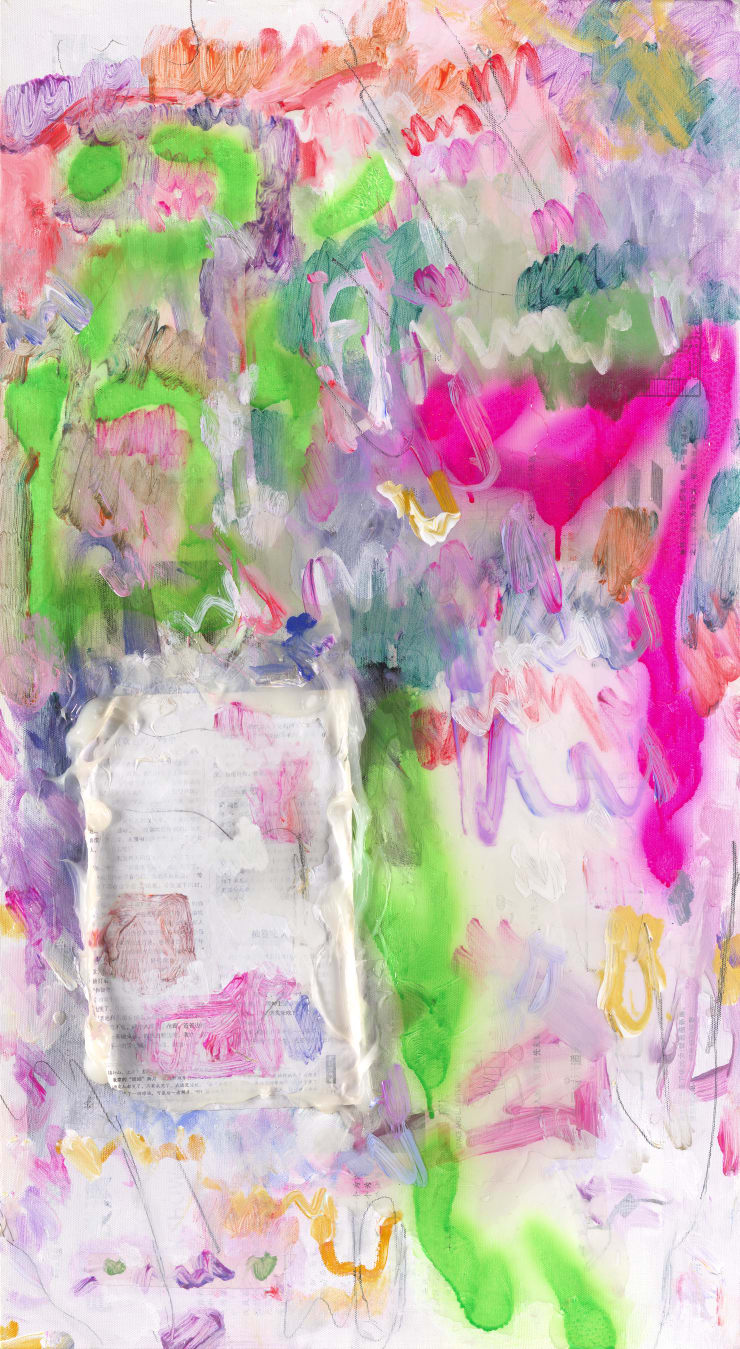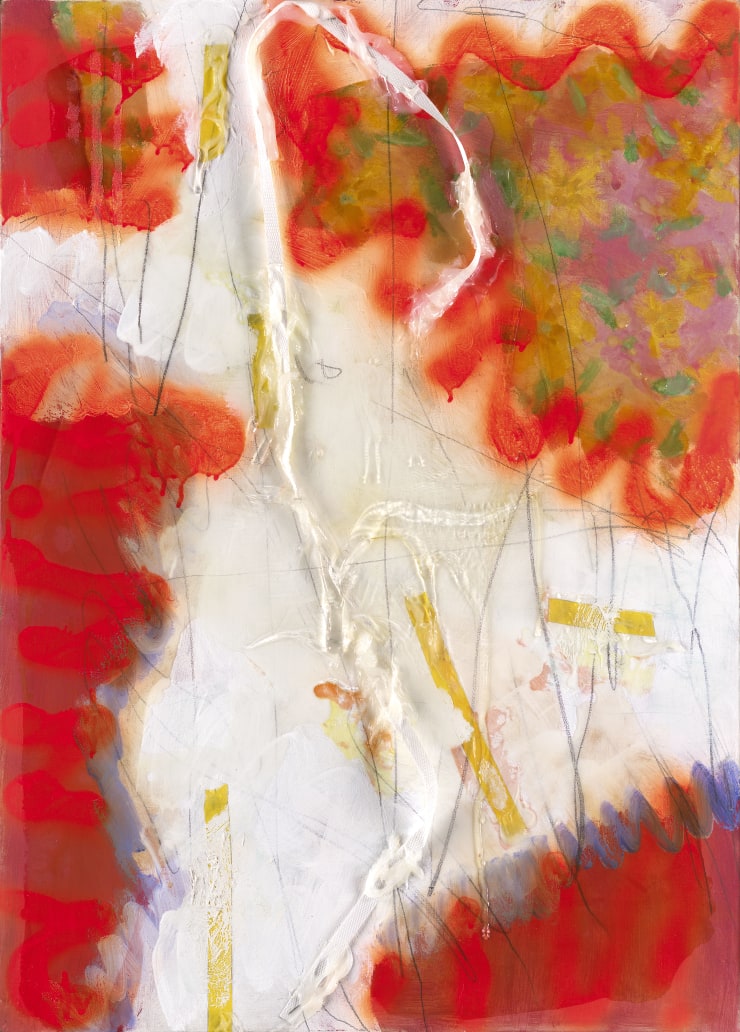All That Is Sacred : Yang Shu
Yang Shu has been a rebel since the 1980s. Contrary to many radical experimentalists, he has never strayed away from canvas, the furthest from which is his occasional addition of everyday readymades. “What medium does an artist choose depends on whether it opens up one’s own nerves.” For him, such medium is painting. Therefore, Yang Shu has never agreed on that painting is an outdated language. Neither is he a fundamentalist painter. To his view, there is no medium distinctions, painting is but a simple format, one that we go through as we eat, drink, shit and piss, as we experience love and hatred, living and dying… In a word, for Yang Shu, painting is an personal life condition in-itself and for-itself. To that extent, the space of Huangjueping and Organhaus are both considered extensions of his body.
Yang Shu has always been painting without premeditation, he paints when he wants to, vice versa. He refuses to express any profound thoughts or concepts through painting. Thus his works have no messages, representations, or anything behind. This is no return to pure formalism, for his disbelief in anything “pure” – which always insinuates some sort of fascism. Yang Shu does not intend to resort to chaos – for most of times, there are precise judgments and boundaries to what he identifies with or argues against. After all, the colorful, disorderly and children's graffiti-like depictions or writings in the paintings are actually his daily traces: random, irregular and slightly disturbed lines and brushstrokes are often the masks for latent potential. Transparent mediums (such as paint, light perception) often makes the picture more opaque and invisible. This seems to be a very subjective act of writing, but it is actually an automatic writing after objectifying oneself.
Therefore, the inference that Yang Shu’s style is"anti-painting" obviously simplifies or even narrows his practice. In my opinion, what Yang Shu opposes (to be precise, commits blasphemy against) is not so much the historical order of painting as all the things that follow preset rules and all the sacred things. He does not shy away from the subtle "interference" of art history (such as Rauschenberg, Twombly) and trendy interests (such as fluorescence, inkjet); he does not worry about whether the pictures are good-looking or not, of course his paintings are not ugly; he refuses to allow the picture to carry any function other than being a painting, especially detests those who try to use some kind of symbol to prove their identity, and even all symbolic and meaningful expressions, he believes that painting is actually the surface; ... It can be seen that what he really believes in is extreme individualism free of dominance or influence from any person - of course, the premise is that he will also not interfere or influence others. If this is a kind of painting Dadaism, then its true background is anarchism. However, he neither wants to be classified or defined, nor is his purpose to instigate a revolution that would destroy all conventions. Instead, he returns to the simple individual primitivism of passive and barbaric animality, in order to defend or resist the ubiquitous mental oppression and inner division.
-
 杨述 Yang Shu, 2021
杨述 Yang Shu, 2021 -
 杨述 Yang Shu, S No.10, 2021
杨述 Yang Shu, S No.10, 2021 -
 杨述 Yang Shu, S No.11, 2021
杨述 Yang Shu, S No.11, 2021 -
 杨述 Yang Shu, S No.16, 2021
杨述 Yang Shu, S No.16, 2021 -
 杨述 Yang Shu, S No.17, 2021
杨述 Yang Shu, S No.17, 2021 -
 杨述 Yang Shu, S No.18, 2021
杨述 Yang Shu, S No.18, 2021 -
 杨述 Yang Shu, S No.19, 2021
杨述 Yang Shu, S No.19, 2021 -
 杨述 Yang Shu, S No.2, 2021
杨述 Yang Shu, S No.2, 2021 -
 杨述 Yang Shu, S No.20, 2021
杨述 Yang Shu, S No.20, 2021 -
 杨述 Yang Shu, S No.21, 2021
杨述 Yang Shu, S No.21, 2021 -
 杨述 Yang Shu, S No.22, 2021
杨述 Yang Shu, S No.22, 2021 -
 杨述 Yang Shu, S No.23, 2021
杨述 Yang Shu, S No.23, 2021 -
 杨述 Yang Shu, S No.24, 2021
杨述 Yang Shu, S No.24, 2021 -
 杨述 Yang Shu, S No.25, 2021
杨述 Yang Shu, S No.25, 2021 -
 杨述 Yang Shu, S No.26, 2021
杨述 Yang Shu, S No.26, 2021 -
 杨述 Yang Shu, S No.27, 2021
杨述 Yang Shu, S No.27, 2021 -
 杨述 Yang Shu, S No.28, 2021
杨述 Yang Shu, S No.28, 2021 -
 杨述 Yang Shu, S No.3, 2021
杨述 Yang Shu, S No.3, 2021 -
 杨述 Yang Shu, S No.4, 2021
杨述 Yang Shu, S No.4, 2021 -
 杨述 Yang Shu, S No.6, 2021
杨述 Yang Shu, S No.6, 2021 -
 杨述 Yang Shu, S No.7, 2021
杨述 Yang Shu, S No.7, 2021 -
 杨述 Yang Shu, S No.8, 2021
杨述 Yang Shu, S No.8, 2021 -
 杨述 Yang Shu, S No.9, 2021
杨述 Yang Shu, S No.9, 2021 -
 杨述 Yang Shu, 2020
杨述 Yang Shu, 2020 -
 杨述 Yang Shu, 无题2021.42号 Untitled 2021 No.42, 2021
杨述 Yang Shu, 无题2021.42号 Untitled 2021 No.42, 2021 -
 杨述 Yang Shu, S No.5, 2021
杨述 Yang Shu, S No.5, 2021



























